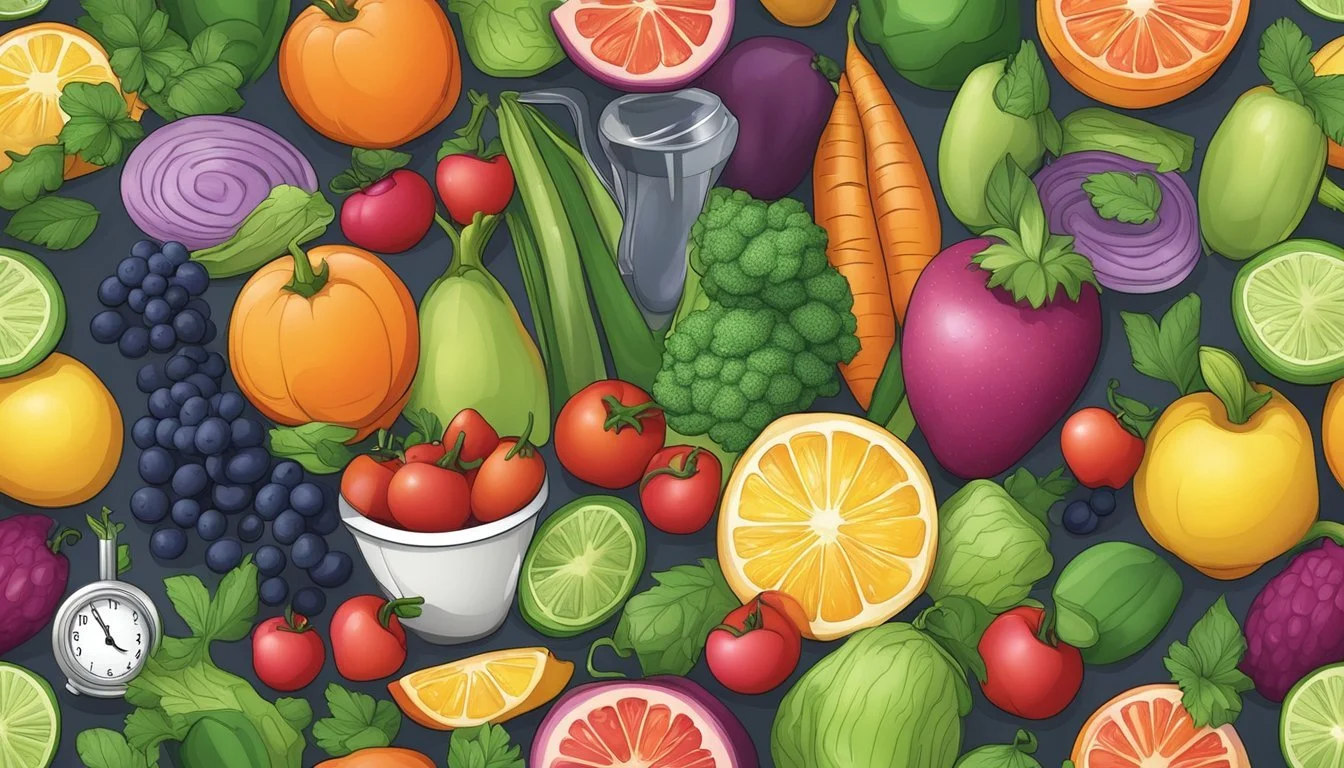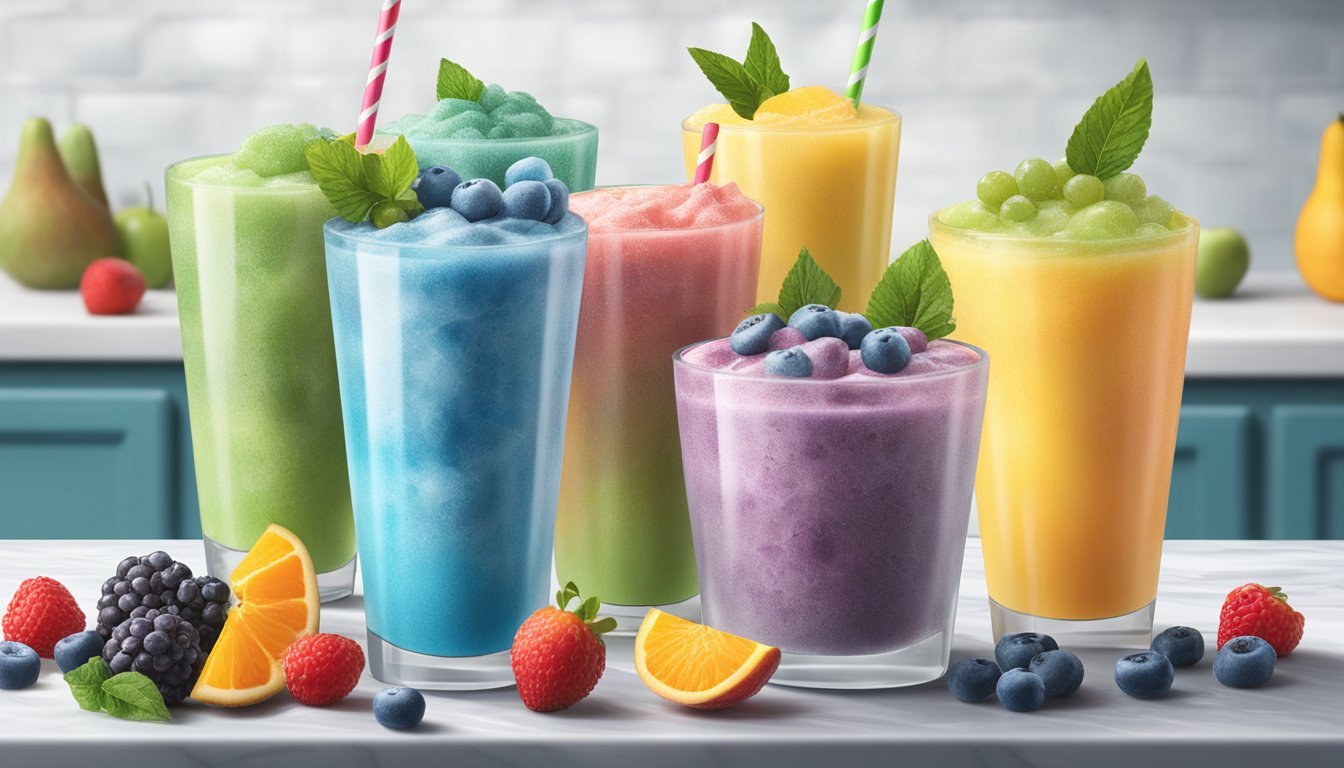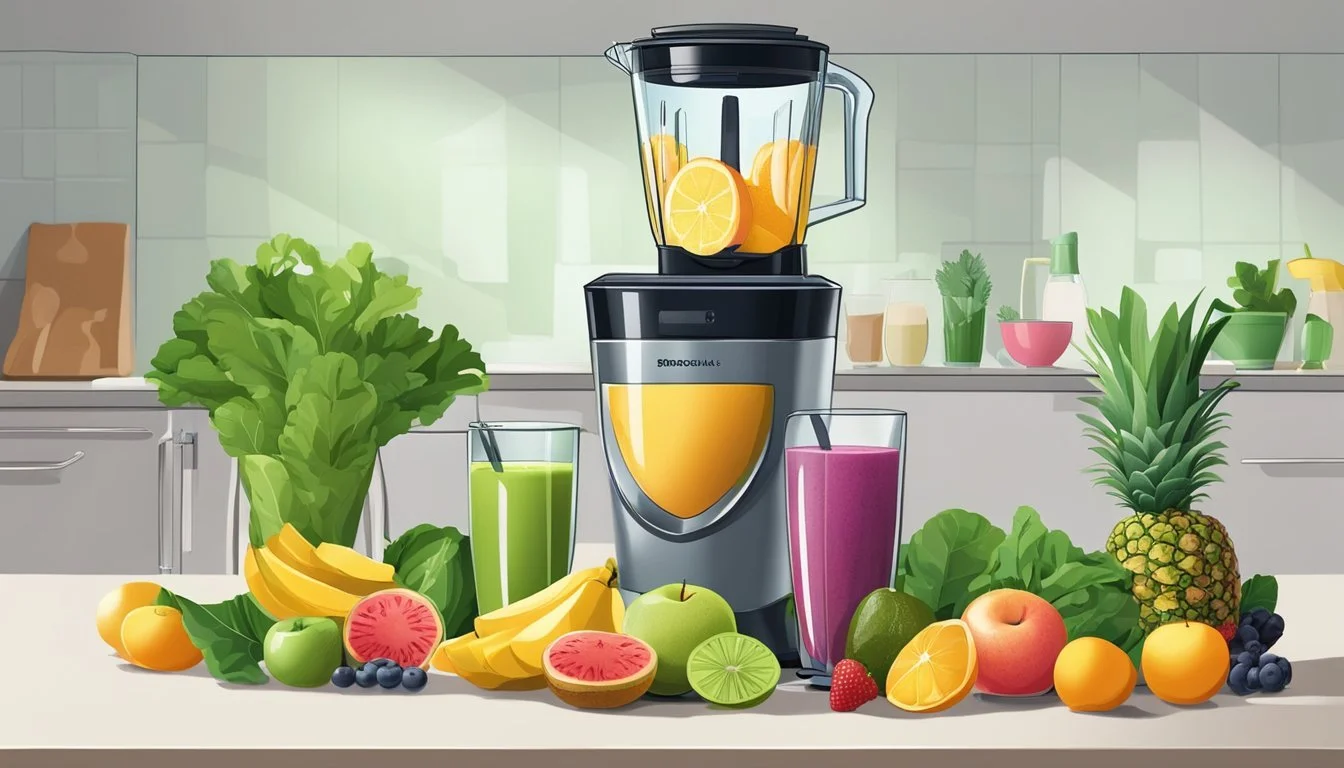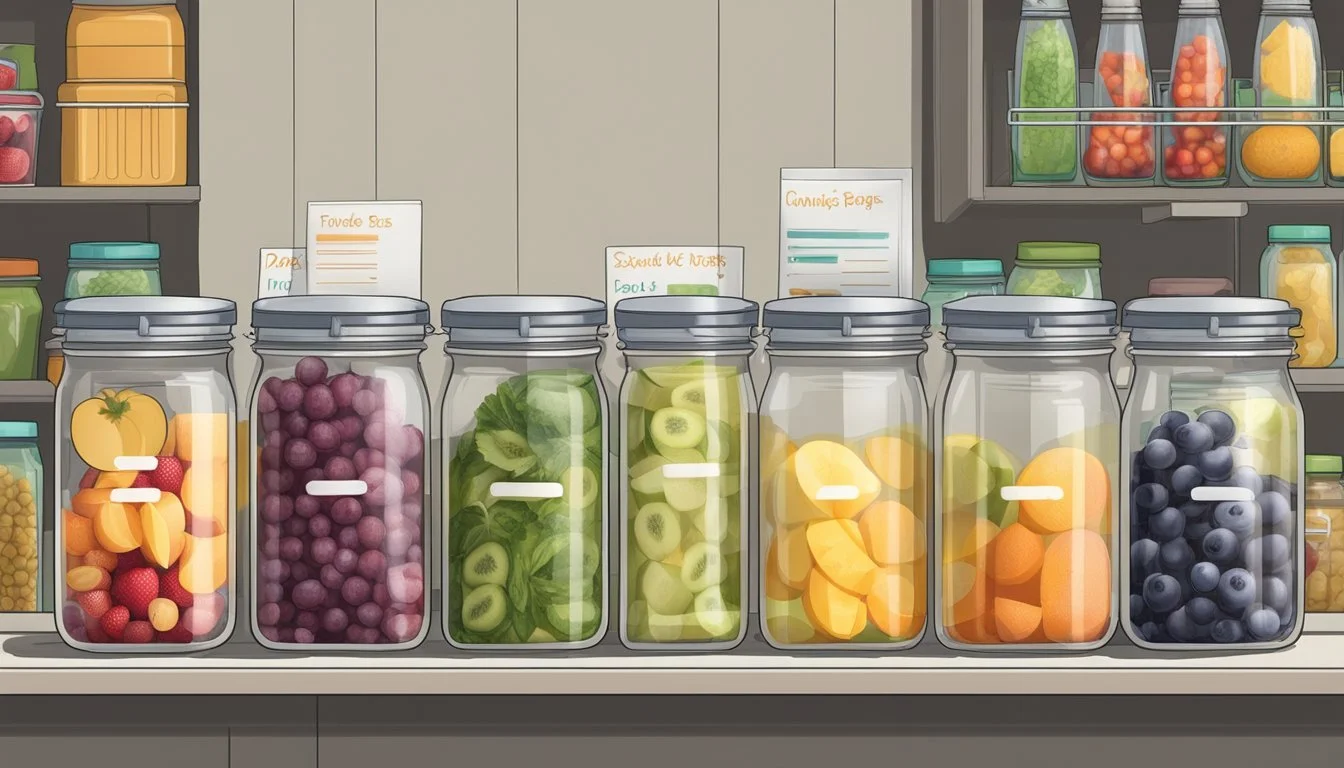How Long Do Smoothies Last?
Understanding Shelf Life and Storage Tips
Smoothies are a popular choice for those seeking a nutritious beverage that's both easy to make and rich in health benefits. These blended drinks typically consist of a variety of ingredients such as fresh or frozen fruits, vegetables, juices, dairy or dairy alternatives, and can include additional nutritional boosts from protein powders, fiber, and vitamins. Their appeal lies in their versatility and the convenience they offer for a nutritious meal replacement or snack that can be tailored to individual tastes and dietary needs.
Storing smoothies properly is crucial in preserving their freshness and nutritional value. In the refrigerator, smoothies can last between 24-48 hours when kept in a clean and airtight container. This duration allows consumers to pre-make smoothies for later consumption without significant loss of taste or health benefits. Freezing smoothies extends their shelf life significantly, up to three months, making them an ideal make-ahead option for those with busy lifestyles. However, thawing is necessary before consumption, and it's essential to plan accordingly as smoothies can take several hours to defrost in the refrigerator.
Understanding Smoothie Storage Basics
When storing smoothies, one must consider whether to refrigerate or freeze them and choose appropriate containers to extend their shelf life.
Refrigeration vs. Freezing
Refrigeration allows a smoothie to be consumed within a relatively short time frame. Smoothies stored in the fridge typically last for 24-48 hours. This is due to the perishable nature of the ingredients used.
Contrastingly, freezing a smoothie can significantly extend its shelf life. A smoothie can last in the freezer for up to three months. However, a frozen smoothie must be thawed before consumption, ideally in the refrigerator overnight.
Choosing the Right Containers
For optimal freshness, one should store smoothies in airtight containers. A popular choice is a mason jar, which not only seals well but is also durable. When freezing smoothies, it's important to ensure containers are freezer-safe to prevent cracks and damage from low temperatures.
Refrigerator: Airtight containers like mason jars.
Freezer: Freezer-safe containers like silicone bags or ice cube trays for portioning.
Determining Smoothie Shelf Life
The shelf life of a smoothie is determined by its ingredients and storage method. In general:
1-2 days in the fridge: This is the maximum time frame to enjoy a smoothie's fresh taste and nutrient retention.
Up to 3 months in the freezer: For longer storage that maintains quality, though gradual taste and texture changes may occur.
Storage Method Container Type Shelf Life Refrigeration Airtight, mason jar 24-48 hours Freezer Freezer-safe, silicone bags Up to 3 months
Factors Affecting Smoothie Shelf Life
The shelf life of a smoothie can vary based on several factors, ranging from the ingredients used to how it is stored. Understanding these factors can help maximize the freshness and nutritional value of a smoothie.
Ingredients and Oxidation
The type of ingredients used plays a crucial role in a smoothie's longevity. Fruits, especially those high in vitamin C, and leafy greens are prone to oxidation, which leads to a loss of nutrients, color, and flavor. Incorporating a range of fresh, quality ingredients can slow down the oxidation process, helping to maintain the smoothie's taste and consistency.
Exposure to Air
Exposure to air accelerates the oxidation process, affecting a smoothie's color and potentially altering its smell and taste. To combat this, it's essential to store smoothies in an airtight container immediately after preparation to help maintain their freshness and nutritional content.
Temperature and Light Effects
The temperature and light conditions under which a smoothie is stored significantly impact its shelf life. Smoothies should be kept in the refrigerator to slow down microbial growth and oxidation. Exposure to light can also lead to degradation of certain nutrients, so storing a smoothie in a dark, cool environment is preferable.
Preparation Tips for Longer Lasting Smoothies
To ensure smoothies retain their freshness and nutritional value for as long as possible, certain preparation methods are advised. Proper blending techniques combined with measures to prevent oxidation can significantly extend a smoothie's shelf life.
Proper Blending Techniques
One should master the art of blending to preserve the integrity of a smoothie. A high-powered blender such as a Vitamix or NutriBullet is preferred because they blend ingredients thoroughly, resulting in a smoother texture that can prevent separation. To make a smoothie last longer:
Use ice or frozen fruits to chill the blend instead of adding ice after blending, which could water down the smoothie and reduce its flavor over time.
Blend ingredients efficiently to ensure a uniform consistency, which helps in slowing down the separation of ingredients.
Preventing Oxidation
Oxidation can degrade the quality of a smoothie, with symptoms like browning and loss of flavor. To minimize this effect:
Add a splash of lemon juice to the blend. The ascorbic acid in lemon juice acts as a natural preservative.
Transfer smoothies to containers with an airtight lid immediately after blending to limit exposure to air.
Fill containers to the brim to minimize the amount of air trapped inside, which can accelerate oxidation.
For extended storage, freeze smoothies in an ice cube tray. Once frozen, transfer the smoothie cubes to a freezer bag with an airtight lid, which makes serving sizes easy to manage and thaw.
Thawing and Defrosting Frozen Smoothies
When one needs to thaw a frozen smoothie, there are methods to ensure both safety and quality retention. The key is to preserve the liquid's texture and taste as it transitions from solid back to a delicious, drinkable shake.
Safe Thawing Methods
Refrigerator Method: Place the frozen smoothie container in the refrigerator and let it thaw over 8 hours. This slow defrosting method prevents bacterial growth.
Cold Water Method: Submerge the sealed container or bag in a bowl of cold water for 10-15 minutes or until adequately thawed, changing the water every 30 minutes for rapid results.
Microwave Method: Although faster, using a microwave can unevenly defrost and possibly warm the smoothie. Use a low power setting and stir intermittently for uniform texture.
Retaining Taste and Nutrients
One's primary goal is to thaw the smoothie without compromising its taste and nutrients. The following considerations aid in maintaining quality:
Consistent Temperature: Avoid temperature fluctuations during thawing to preserve the smoothie's texture and flavor profile.
Airtight Containers: Store and defrost smoothies in airtight containers, preventing oxidation and nutrient degradation.
Immediate Consumption: It is recommended to consume the smoothie promptly after defrosting for the best taste and nutrient content.
Incorporating Smoothies into Your Diet
Integrating smoothies into one's daily routine can enhance a healthy diet, providing essential nutrients in a convenient and delicious form. Meal prepping and selecting healthy combinations are key for a balanced intake.
Recipe Ideas for Meal Prepping
For those looking to streamline their breakfast regimen, prepping smoothie ingredients ahead of time can be a game-changer. Using mason jars or freezer-safe containers, one can portion out fruits, vegetables, and proteins like yogurt, ensuring a quick blend-up in the morning. Here's a basic structure to follow for prepping a week's worth:
Day 1-7: Mason Jars
Fruits: Banana slices, mixed berries, mango chunks
Vegetables: Chopped spinach, kale, or mixed greens
Proteins and Others: A scoop of Greek yogurt, chia seeds, or protein powder
Liquids (to add on blending day): Choice of milk, juice, or water
This approach ensures variety and saves time, making healthy breakfast choices as simple as blend-and-go.
Healthy Smoothie Combinations
Selecting the right ingredients can maximize the health benefits of smoothies. Here are some nutrient-dense combinations that are both healthy and flavorful:
Banana Smoothie:
1 ripe banana (frozen for creaminess)
½ cup low-fat Greek yogurt
1 tablespoon almond butter
1 cup almond milk (unsweetened)
This blend provides a solid dose of potassium and protein, perfect for post-workout recovery or a filling breakfast.
Spinach Smoothie:
1 cup fresh spinach
½ banana for sweetness
¼ cup avocado for creaminess
1 tablespoon flaxseeds for Omega-3s
1 cup coconut water for hydration
Rich in vitamins A and C, as well as healthy fats and hydration, this green smoothie is an ideal start for a day of focused energy.
Troubleshooting Common Smoothie Issues
When making smoothies, one might encounter issues such as separation and mold growth which can affect both the texture and safety of the drink. Understanding how to address these problems ensures the smoothie remains enjoyable and safe to consume.
Dealing with Separation
When a smoothie separates, it can become unappealing with layers of liquid on top and heavier particles at the bottom. To prevent this, one can:
Blend smoothies with a high-fiber fruit or vegetable to provide more structure.
Incorporate a small amount of citrus juice, which contains natural emulsifiers to maintain the mixture's homogeneity.
Use a tablespoon of chia seeds or flaxseeds that gelatinize and help keep the ingredients together.
Preventing Mold Growth
It's crucial that one takes steps to inhibit mold from developing to preserve the smoothie's quality and nutritional value. One can ensure freshness and safety by:
Using fresh ingredients and washing them thoroughly before blending.
Storing the smoothie in a clean, airtight container immediately after blending, which slows down oxidation and prevents mold spores from contaminating the drink.
Drinking or refrigerating smoothies immediately to minimize the time they spend at room temperature which can accelerate mold growth.
Advanced Storage Techniques
Advanced storage techniques can greatly extend the longevity of smoothies. Employing methods such as vacuum sealing and creating freezer packs are efficient ways to keep smoothies fresh and nutritious.
Vacuum Sealing for Freshness
Vacuum sealing is a powerful method to preserve the freshness of smoothies. By removing air from the storage container, it minimizes oxidation and retains the nutritional value. Vacuum blenders can blend and store smoothies in an oxygen-depleted environment, which can help in preventing degradation of taste and color. For those who do not have a vacuum blender, smoothies can be transferred to airtight containers and vacuum-sealed using a handheld vacuum sealer.These airtight containers sustain the flavor and nutritional content until the smoothie is ready to be consumed.
Creating Freezer Smoothie Packs
Freezer smoothie packs are a convenient solution for storing pre-portioned smoothie ingredients. They allow for quick and easy preparation while maintaining the taste and health benefits. To make freezer smoothie packs, here are the steps:
Choose Ingredients:
Combine fruits, vegetables, and other smoothie components.
It's best if the ingredients are pre-chopped and frozen.
Portion Control:
Measure out the ingredients for a single smoothie serving.
This ensures consistency in taste and nutrition.
Packaging:
Place the portioned ingredients into freezer bags or other freezer-safe airtight containers.
Label the packs with the date and contents for easy identification later on.
By preparing these packs, one can save time and also ensure that the store-bought smoothies are used efficiently, without waste. Using high-quality freezer bags not only prevents freezer burn but also maximizes space within the freezer.
Frequently Asked Questions
How long can one expect homemade smoothies to last in the refrigerator? Homemade smoothies typically last for 24 to 48 hours when stored in a clean container, like a mason jar, in the fridge. For optimal quality and safety, it is recommended to consume them within this time frame.
Does the type of fruit affect the shelf-life of a smoothie? Yes, the use of fresh fruit may result in a slightly shorter shelf life due to quicker oxidation, while frozen fruit can help the smoothie retain its quality longer due to reduced enzyme activity.
What is the difference in shelf-life between homemade and store-bought smoothies? Store-bought smoothies may last longer due to preservatives and pasteurization. Conversely, homemade smoothies lack these additives and are typically fresher but have a shorter refrigerator shelf life.
Can a smoothie last longer if made in a high-powered blender like a Ninja? The efficiency of blending in devices like a Ninja blender does not significantly extend the shelf-life but ensures a smoother consistency, which can impact perceived freshness.
When juicing, how does the shelf-life compare to that of smoothies? Juicing generally removes fiber, which can lead to quicker spoilage; thus, juices may have a shorter shelf-life than smoothies.
How does one safely extend the lifespan of a smoothie? To extend the life of a smoothie, one should:
Store it in the fridge immediately after blending.
Use an airtight container to minimize oxygen exposure.
Add a source of acidity, like lemon juice, to slow oxidation.
Is it advisable to sweeten smoothies if aiming for extended preservation? Sweetening does not affect the preservation significantly; however, one should be mindful of added sugars, as natural sweetness from fruits often suffices.







